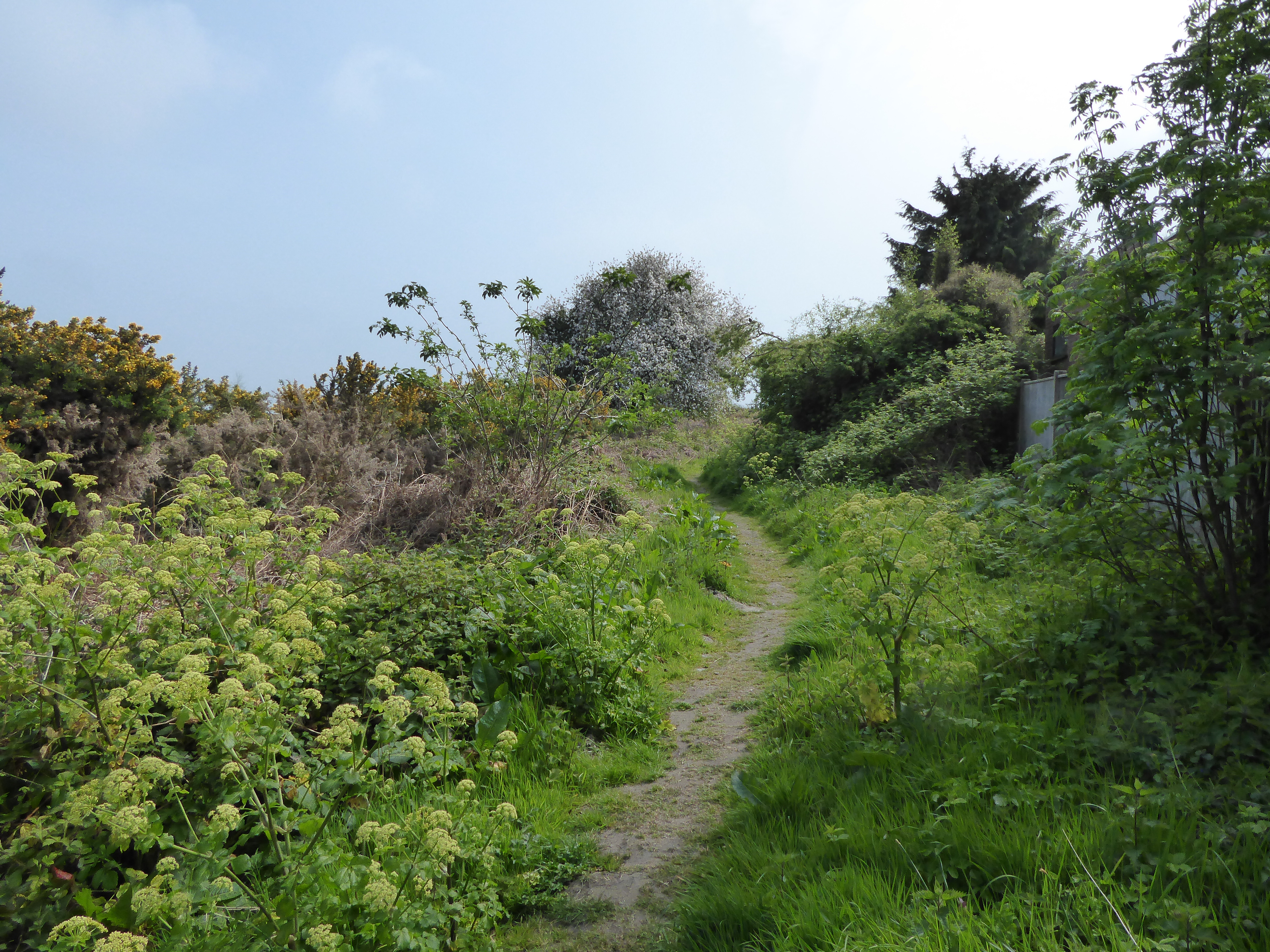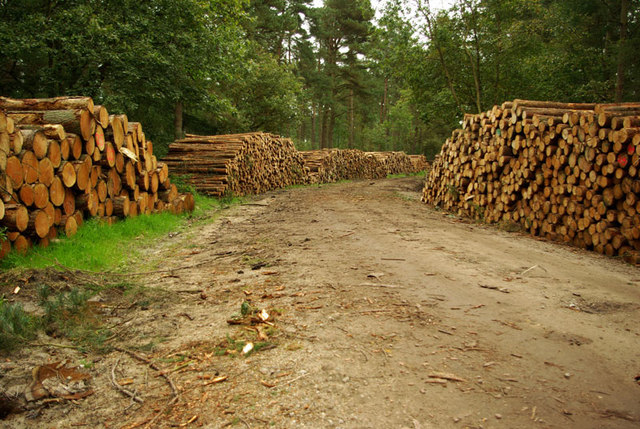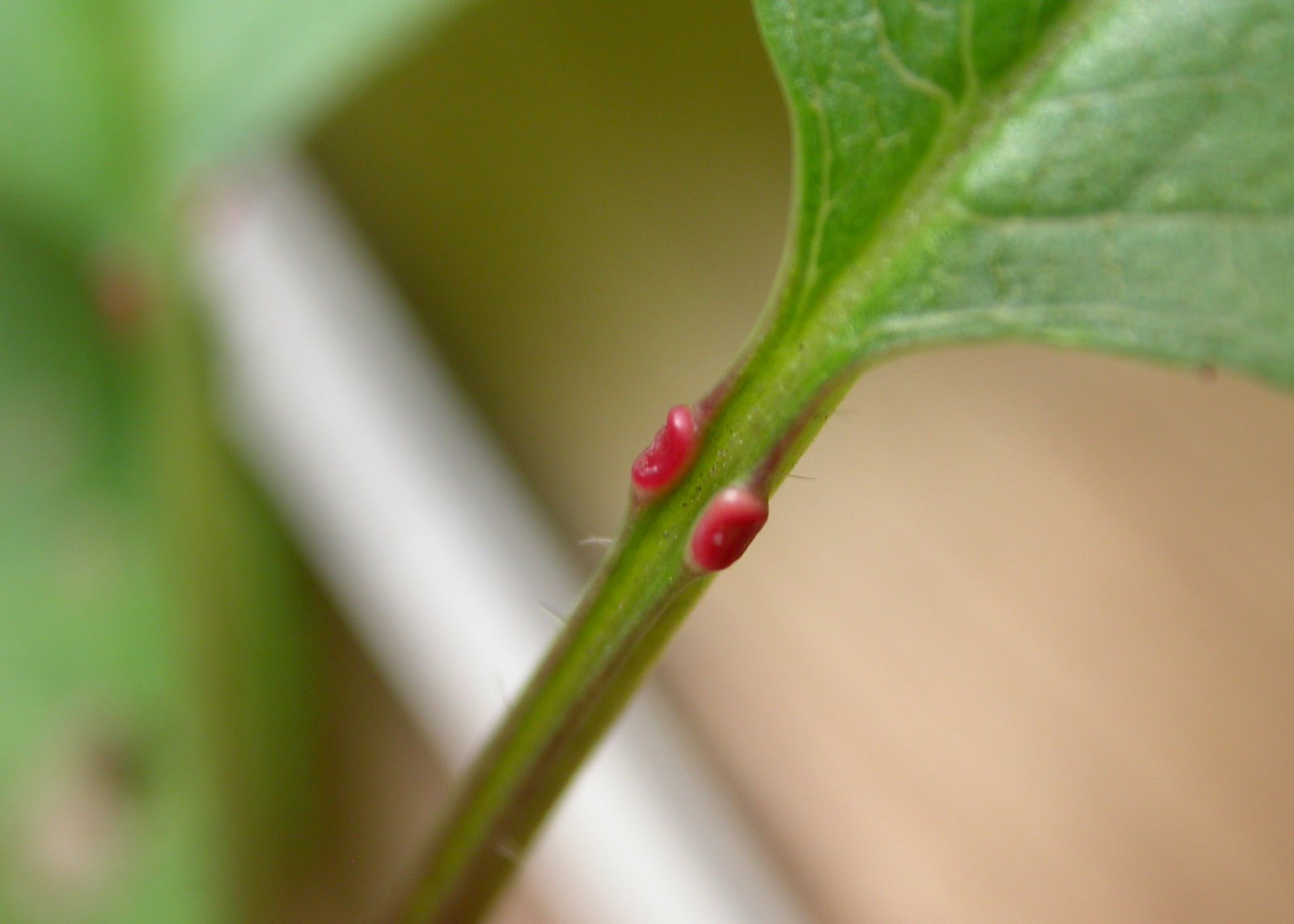|
Arger Fen
Arger Fen is a biological Site of Special Scientific Interest (SSSI) south-east of Sudbury in Suffolk, England. The site occupies two separate areas. The Arger Fen Local Nature Reserve is part of the larger eastern block, and contains part of the Tiger Hill Local Nature Reserve, along with part of the Arger Fen and Spouse's Vale, a nature reserve managed by the Suffolk Wildlife Trust. The site lies in the Dedham Vale Area of Outstanding Natural Beauty, The site is made up of a mix of woodland and meadow habitats with much of the woodland believed to be ancient in origin. The underlying geology is a mixture of sand and gravel banks and clay soils, producing a mix of habitat types, including wet fen type habitats at lower levels and dry grasslands on acidic soils on hill tops. It is one of only two known areas of ancient woodland in Eastern England which feature wild cherry (''Prunus avium''). Badgers are found on the reserve in a number of active setts. Other rare fauna incl ... [...More Info...] [...Related Items...] OR: [Wikipedia] [Google] [Baidu] |
Site Of Special Scientific Interest
A Site of Special Scientific Interest (SSSI) in Great Britain or an Area of Special Scientific Interest (ASSI) in the Isle of Man and Northern Ireland is a conservation designation denoting a protected area in the United Kingdom and Isle of Man. SSSI/ASSIs are the basic building block of site-based nature conservation legislation and most other legal nature/geological conservation designations in the United Kingdom are based upon them, including national nature reserves, Ramsar sites, Special Protection Areas, and Special Areas of Conservation. The acronym "SSSI" is often pronounced "triple-S I". Selection and conservation Sites notified for their biological interest are known as Biological SSSIs (or ASSIs), and those notified for geological or physiographic interest are Geological SSSIs (or ASSIs). Sites may be divided into management units, with some areas including units that are noted for both biological and geological interest. Biological Biological SSSI/A ... [...More Info...] [...Related Items...] OR: [Wikipedia] [Google] [Baidu] |
Hazel Dormouse
The hazel dormouse or common dormouse (''Muscardinus avellanarius'') is a small mammal and the only living species in the genus ''Muscardinus''. Distribution and habitat The hazel dormouse is native to northern Europe and Asia Minor. It is the only dormouse native to the British Isles, and is therefore often referred to simply as the "dormouse" in British sources, although the edible dormouse, ''Glis glis'', has been accidentally introduced and now has an established population in South East England. Though Ireland has no native dormouse, the hazel dormouse was discovered in County Kildare in 2010, and appears to be spreading rapidly, helped by the prevalence of hedgerows in the Irish countryside. The United Kingdom distribution of the hazel dormouse can be found on theNational Biodiversity Network website A 2020 study found that hazel dormice in Britain have declined by 51% since 2000. Woodland habitat loss and management and a warming climate are seen as material threats to ... [...More Info...] [...Related Items...] OR: [Wikipedia] [Google] [Baidu] |
Local Nature Reserves In Suffolk
Suffolk is a county in East Anglia. It is bounded by Norfolk to the north, Cambridgeshire to the west and Essex to the south. With an area of , it is the eighth largest county in England, and in mid-2016 the population was 745,000. At the top level of local government is Suffolk County Council, and below it are five borough and district councils: Ipswich, East Suffolk, Mid Suffolk, Babergh and West Suffolk. Much of the coast consists of the estuaries of the Orwell, Stour, Alde, Deben and Blyth rivers, with large areas of wetlands and marshes. Local nature reserves (LNRs) are designated by local authorities under the National Parks and Access to the Countryside Act 1949. The local authority must have a legal control over the site, by owning or leasing it or having an agreement with the owner. LNRs are sites which have a special local interest either biologically or geologically, and local authorities have a duty to care for them. They can apply local bye-laws to manage and ... [...More Info...] [...Related Items...] OR: [Wikipedia] [Google] [Baidu] |
Sites Of Special Scientific Interest In Suffolk
Site most often refers to: * Archaeological site * Campsite, a place used for overnight stay in an outdoor area * Construction site * Location, a point or an area on the Earth's surface or elsewhere * Website, a set of related web pages, typically with a common domain name It may also refer to: * Site, a National Register of Historic Places property type * SITE (originally known as ''Sculpture in the Environment''), an American architecture and design firm * Site (mathematics), a category C together with a Grothendieck topology on C * ''The Site'', a 1990s TV series that aired on MSNBC * SITE Intelligence Group, a for-profit organization tracking jihadist and white supremacist organizations * SITE Institute, a terrorism-tracking organization, precursor to the SITE Intelligence Group * Sindh Industrial and Trading Estate, a company in Sindh, Pakistan * SITE Centers, American commercial real estate company * SITE Town, a densely populated town in Karachi, Pakistan * S.I.T.E Indust ... [...More Info...] [...Related Items...] OR: [Wikipedia] [Google] [Baidu] |
Forestry Commission
The Forestry Commission is a non-ministerial government department responsible for the management of publicly owned forests and the regulation of both public and private forestry in England. The Forestry Commission was previously also responsible for Forestry in Wales and Scotland. However, on 1 April 2013, Forestry Commission Wales merged with other agencies to become Natural Resources Wales, whilst two new bodies ( Forestry and Land Scotland and Scottish Forestry) were established in Scotland on 1 April 2019. The Forestry Commission was established in 1919 to expand Britain's forests and woodland, which had been severely depleted during the First World War. The Commission bought large amounts of agricultural land on behalf of the state, eventually becoming the largest manager of land in Britain. Today, the Forestry Commission is divided into three divisions: Forestry England, Forestry Commission and Forest Research. Over time the purpose of the Commission broadened to i ... [...More Info...] [...Related Items...] OR: [Wikipedia] [Google] [Baidu] |
Ash Dieback
''Hymenoscyphus fraxineus'' () is an ascomycete fungus that causes ash dieback, a chronic fungal disease of ash trees in Europe characterised by leaf loss and crown dieback in infected trees. The fungus was first scientifically described in 2006 under the name ''Chalara fraxinea''. Four years later it was discovered that ''Chalara fraxinea'' is the asexual (anamorphic) stage of a fungus that was subsequently named ''Hymenoscyphus pseudoalbidus'' and then renamed as ''Hymenoscyphus fraxineus''. Trees reported dying in Poland in 1992 are now believed to have been infected with this pathogen. It is now widespread in Europe, with up to 85% mortality rates recorded in plantations and 69% in woodlands. It is closely related to a native fungus ''Hymenoscyphus albidus'', which is harmless to European ash trees. According to a 2016 report published in the Journal of Ecology a combination of ''H. fraxineus'' and emerald ash borer attacks could wipe out European ash trees. Genetics Th ... [...More Info...] [...Related Items...] OR: [Wikipedia] [Google] [Baidu] |
Fraxinus
''Fraxinus'' (), commonly called ash, is a genus of flowering plants in the olive and lilac family, Oleaceae. It contains 45–65 species of usually medium to large trees, mostly deciduous, though a number of subtropical species are evergreen. The genus is widespread across much of Europe, Asia, and North America. The leaves are opposite (rarely in whorls of three), and mostly pinnately compound, though simple in a few species. The seeds, popularly known as "keys" or "helicopter seeds", are a type of fruit known as a samara. Some ''Fraxinus'' species are dioecious, having male and female flowers on separate plants but sex in ash is expressed as a continuum between male and female individuals, dominated by unisexual trees. With age, ash may change their sexual function from predominantly male and hermaphrodite towards femaleness ; if grown as an ornamental and both sexes are present, ashes can cause a considerable litter problem with their seeds. Rowans or mountain ashes have ... [...More Info...] [...Related Items...] OR: [Wikipedia] [Google] [Baidu] |
Barbastelle
''Barbastella'' is a genus of vespertilionid bats. There are seven extant species in this genus and one only known from fossil remains. Species The genus consists of the following species: * ''Barbastella barbastellus'' – western barbastelle * ''Barbastella beijingensis'' – Beijing barbastelle * ''Barbastella caspica'' – Caspian barbastelle * ''Barbastella darjelingensis'' – eastern barbastelle or Asian barbastelle * ''Barbastella leucomelas'' – Arabian barbastelle * ''Barbastella pacifica'' – Japanese barbastelle * ''Barbastella maxima ''Barbastella'' is a genus of vespertilionid bats. There are seven extant species in this genus and one only known from fossil remains. Species The genus consists of the following species: * ''Barbastella barbastellus'' – western barbastelle ...'' References External links * * Bat genera Taxa named by John Edward Gray {{Vespertilionidae-stub ... [...More Info...] [...Related Items...] OR: [Wikipedia] [Google] [Baidu] |
Badger
Badgers are short-legged omnivores in the family Mustelidae (which also includes the otters, wolverines, martens, minks, polecats, weasels, and ferrets). Badgers are a polyphyletic rather than a natural taxonomic grouping, being united by their squat bodies and adaptions for fossorial activity. All belong to the caniform suborder of carnivoran mammals. The fifteen species of mustelid badgers are grouped in four subfamilies: four species of Melinae (genera ''Meles'' and ''Arctonyx'') including the European badger, five species of Helictidinae (genus ''Melogale'') or ferret-badger, the honey badger or ratel Mellivorinae (genus ''Mellivora''), and the American badger Taxideinae (genus ''Taxidae''). Badgers include the most basal mustelids; the American badger is the most basal of all, followed successively by the ratel and the Melinae; the estimated split dates are about 17.8, 15.5 and 14.8 million years ago, respectively. The two species of Asiatic stink badge ... [...More Info...] [...Related Items...] OR: [Wikipedia] [Google] [Baidu] |
Sudbury, Suffolk
Sudbury (, ) is a market town in the south west of Suffolk, England, on the River Stour, Suffolk, River Stour near the Essex border, north-east of London. At the United Kingdom Census 2011, 2011 census, it had a population of 13,063. It is the largest town in the Babergh District, Babergh local government district and part of the South Suffolk (UK Parliament constituency), South Suffolk constituency. Sudbury was an Anglo-Saxon England, Anglo-Saxon settlement from the end of the 8th century, and its market was established in the early 11th century. Its textile industries prospered in the Late Middle Ages, the wealth of which funded many of its buildings and churches. The town became notable for its art in the 18th century, being the birthplace of Thomas Gainsborough, whose landscapes offered inspiration to John Constable, another Suffolk painter of the surrounding Stour Valley area. The 19th century saw the arrival of the railway with the opening of a station on the historic St ... [...More Info...] [...Related Items...] OR: [Wikipedia] [Google] [Baidu] |
Prunus Avium
''Prunus avium'', commonly called wild cherry, sweet cherry, gean, or bird cherryWorld Economic Plants: A Standard Reference, Second Edition'. CRC Press; 19 April 2016. . p. 833–. is a species of cherry, a flowering plant in the rose family, Rosaceae. It is native to Europe, Anatolia, Maghreb, and Western Asia, from the British Isles south to Morocco and Tunisia, north to the Trondheimsfjord region in Norway and east to the Caucasus and northern Iran, with a small isolated population in the western Himalaya.Den Virtuella Floran''Prunus avium''(in Swedish; witmap The species is widely cultivated in other regions and has become naturalized in North America and Australia. ''Prunus avium'' has a diploid set of sixteen chromosomes (2''n'' = 16). All parts of the plant except for the ripe fruit are slightly toxic, containing cyanogenic glycosides. Description ''Prunus avium'' is a deciduous tree growing to tall, with a trunk up to in diameter. Young trees show stron ... [...More Info...] [...Related Items...] OR: [Wikipedia] [Google] [Baidu] |
Area Of Outstanding Natural Beauty
An Area of Outstanding Natural Beauty (AONB; , AHNE) is an area of countryside in England, Wales, and Northern Ireland, that has been designated for conservation due to its significant landscape value. Areas are designated in recognition of their national importance by the relevant public body: Natural England, Natural Resources Wales, and the Northern Ireland Environment Agency respectively. In place of AONB, Scotland uses the similar national scenic area (NSA) designation. Areas of Outstanding Natural Beauty enjoy levels of protection from development similar to those of UK national parks, but unlike national parks the responsible bodies do not have their own planning powers. They also differ from national parks in their more limited opportunities for extensive outdoor recreation. History The idea for what would eventually become the AONB designation was first put forward by John Dower in his 1945 ''Report to the Government on National Parks in England and Wales''. D ... [...More Info...] [...Related Items...] OR: [Wikipedia] [Google] [Baidu] |





